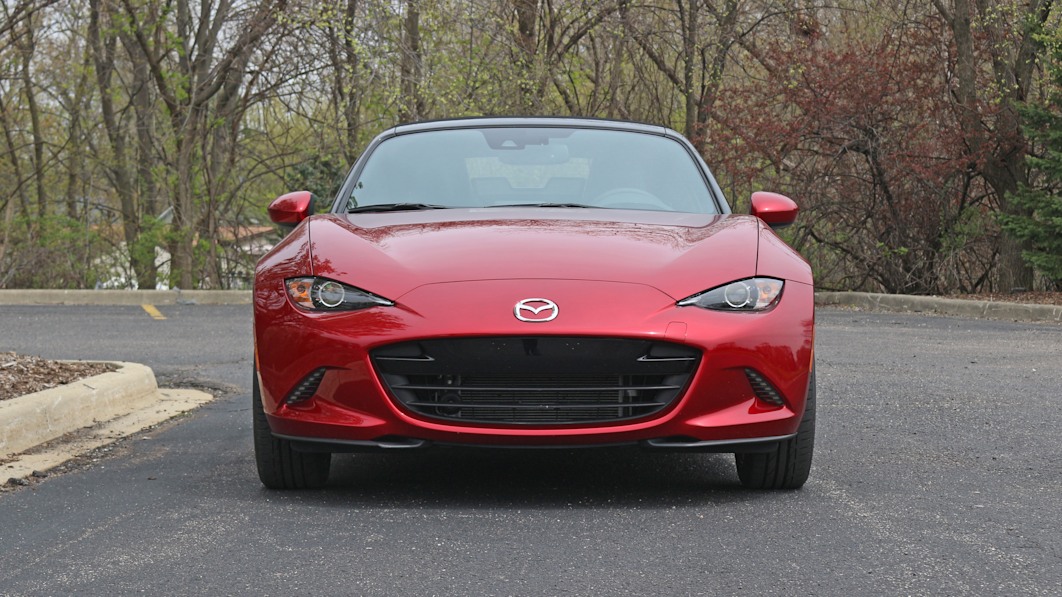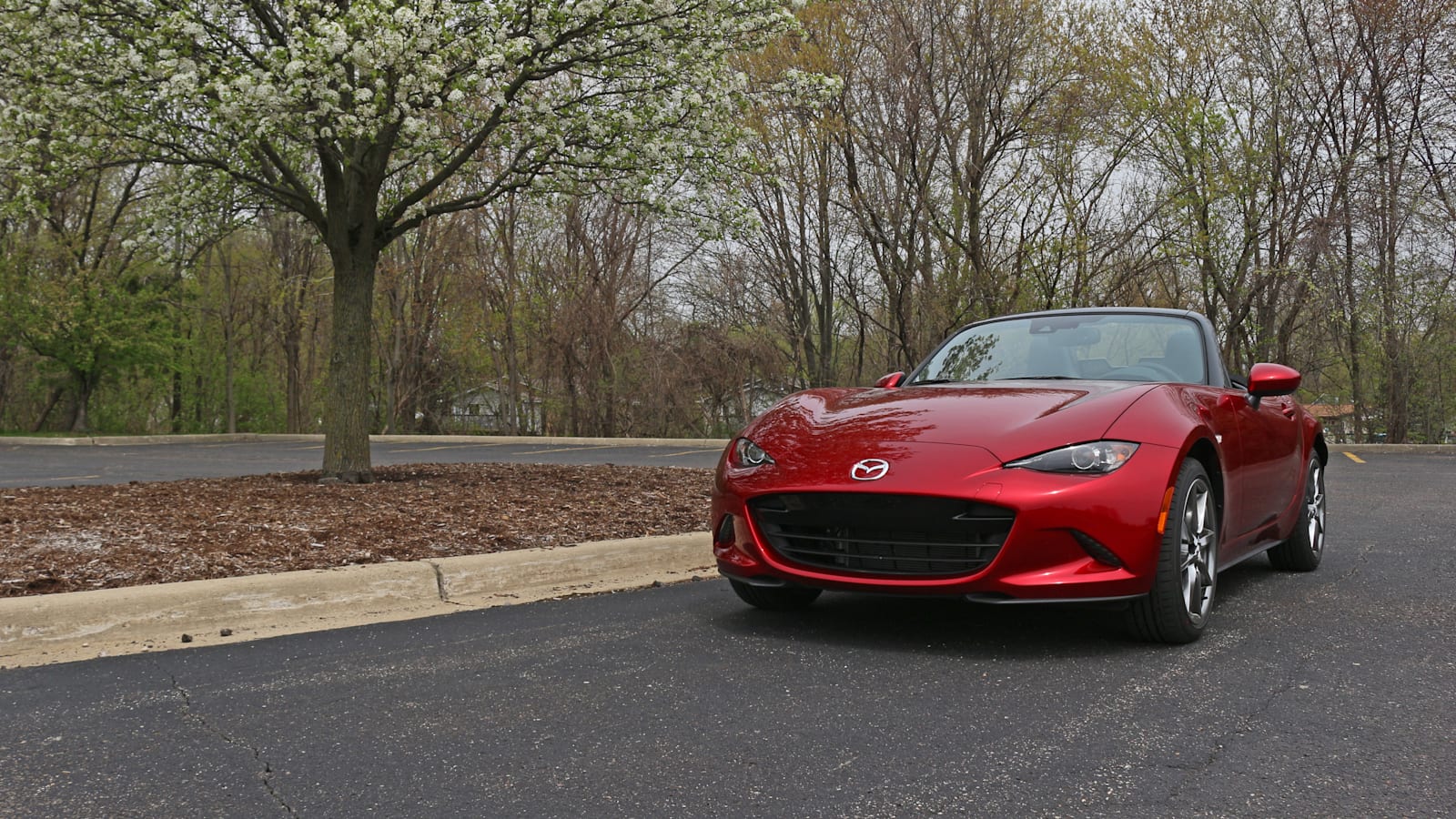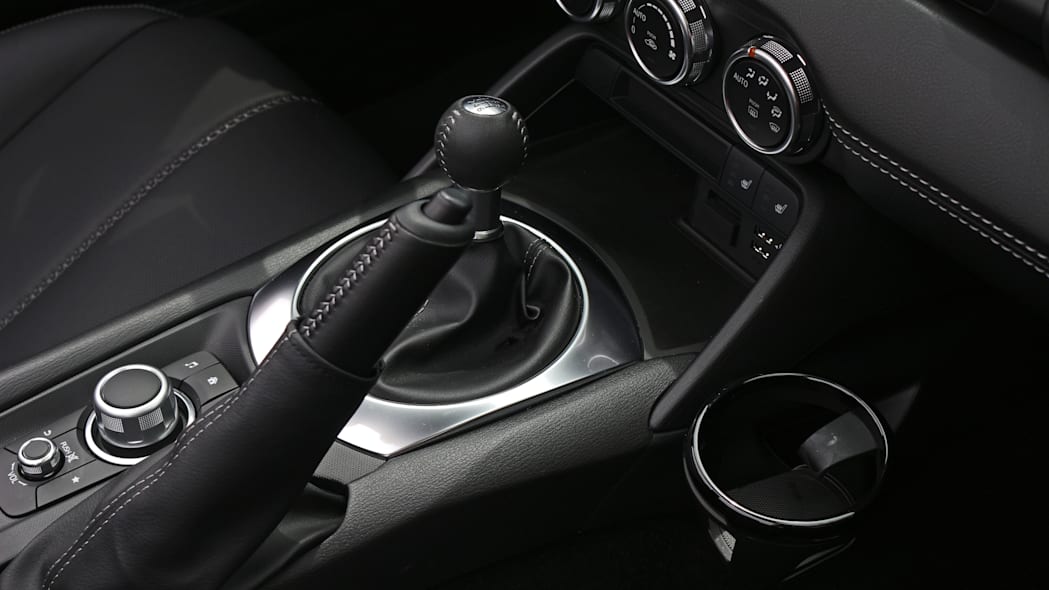2022 Mazda MX-5 Miata Road Test | Old dog, new trick

Miata fans live by a simple mantra. Whether you’re behind the wheel of a spankin’ new 2022 Mazda MX-5 or the 1990 Rustpile Edition™ sitting in my garage, one truth unites us all: M.I.A.T.A. — Miata Is Always The Answer. Sure, it’s exclusionary tribalism with a welcoming smile behind it, but for a long time, it had the benefit of being true. As bargain-priced, rear-wheel-drive models evaporated from the market throughout the 1990s and early 2000s, Miata became the enthusiast’s entry-level car of choice if they wanted rear-wheel drive.
Even the ho-hum alternatives we take for granted today were fewer and farther between back then. Remember, the DaimlerChrysler partnership didn’t spit out a Challenger with a decent V6 until 2011 and we went nearly an entire decade without a Camaro of any kind. The Honda S2000, Nissan 350Z and Mazda’s own RX-8 were only inexpensive by 2022 standards; back then, they eclipsed the 4.6-liter V8 Mustang GT’s MSRP — by a lot, in the case of the Honda. So, for a long time, your options were Miata, Mustang or making do with front-wheel drive.
It helps of course that the Miata has always been good. Very good in fact, despite following a formula that most modern car buyers eschew. Light, low and limber — three terms you’d never use to describe today’s crop of performance SUVs — were the name of the game then just as they are now. The ND MX-5 adheres to the formula even better than the intervening NB and NC models did, in fact, but for some reason, Mazda keeps tinkering with it.
Certainly nobody (apart from owners of 2016-2018 models, maybe) complained a few years ago when Mazda upped the 2.0-liter 4-cylinder’s power output from 155 hp to 181. The 2.0 may not be any more characterful or engaging with another 26 horses, but they’re certainly welcome. Ask any clear-headed Mazda fan how best to describe the manufacturer’s offerings and you’ll hear some variant of “outstanding chassis, acceptable engine.” That’s gone double since the Renesis rotary was discontinued (yeah, they’re as reliable as politicians, but equally entertaining right up until they fail).
But for 2022, Mazda looked not to the powertrain, but to the chassis for opportunities to improve. Finding none but wanting to do something anyway, Mazda’s engineers came up with new braking software that helps mitigate body motion in hard cornering, reducing roll and making steering response more linear. Mazda calls it “Kinematic Posture Control” (KPC) and it requires no additional hardware to implement — just what the doctor ordered.


While you’re busy doing the business of hustling a Miata around tight corners, KPC will digitally sneak in and drag the inside rear brake juuust a tad. Applying the brake in this fashion will help counter the natural upward movement of the body over it, flattening out the car’s cornering attitude and giving the impression of a firmer suspension setup without the added cost, complexity and ride quality penalty of actually engineering it that way in the first place. If this is ringing a bell to you, it’s very similar to Nissan’s “Active Ride Control.” Mmm, yes. Nissan Altima tech in my RWD roadster. That’s exactly what I wanted.
“That’s good,” you say. “Miata Internet told me the ND handles like a yacht, unlike previous Miatas, which are basically race cars.” Hey, I remember my first Internet. And I remember when the exact same thing was said about the NC. But “4×4 ride height” and “leans like a container ship” are only valid measures of performance in magazine racing world, and let’s make something perfectly clear: body roll has been a product of Mazda’s aforementioned triumvirate of L-words since the very beginning. Yeah, your buddy’s ’94 R-Package corners like it’s on rails after $3,500 in parts from Flyin’ Miata. Bone-stock, that thing had its inside hip in the air going around every. single. cone.
Body motion is not inherently bad, it’s merely a tangible expression of a chassis’ weight management characteristics. When Mazda re-jiggered the seating position for the current Miata, the entire point was to put the driver closer to the car’s roll center so that its attitude (as in pitch and yaw, not how smiley the grille is) could be more easily interpreted. This change had the side effect of reducing the Miata’s perceived body roll, even though it did very little (not nothing, but we’re not going to dig into that here) to alter the amount of weight transfer taking place.
How? Go sit on the center of a see-saw while two of your buddies take the good seats. Now, close your eyes. How much is the see-saw moving? While you may feel the rocking motion, your body isn’t ascending or descending. To you, it’s not moving at all. To your friends, it’s moving a great deal. Who’s right? If this were a philosophy class, the answer would be “both,” but at a performance driving school, you’ll learn that it’s the see-saw’s perspective that ultimately counts.
That’s because driving fast is all about managing that weight transfer. Whether you’re at the drag strip or chasing cones, being quick is all about putting weight where you want it and not where you don’t. Body roll is the car’s most effective tool for telling you how well you’re managing its weight. Reducing it, whether in practice or merely through perception, is equivalent to reducing the volume of the chassis’ communication system. That’s why you want a roly-poly ride in a big, heavy, unwieldy truck; it’s there to tell you where the lines are so you don’t cross them.
Fortunately, the Miata’s limits are relatively low and approachable — again, part of the formula — and it’s highly unlikely somebody upgrading from an earlier ND into a new 2022 is going to overdrive the thing ass-first into oncoming traffic because it’s infinitesimally firmer than the car it replaced. In fact, an experienced ‘shoe may even be able to wring a couple tenths per lap out of it on their track of choice if Mazda’s claimed limited-slip enhancements actually translate to higher real-world exit speeds, though I’d wonder at what expense to brake longevity.



Back-to-back, I’m sure it even makes a perceptible difference on the street. Since I haven’t driven an ND since 2016, I can’t speak to what it does for the handling except to say that it certainly doesn’t detract from the experience. I’d simply argue it wasn’t needed, as the car’s ride/handling balance was already brilliant. At least there’s no weight penalty; the only cost associated with it is money.
Where a system like this makes more sense is in Mazda’s new premium-oriented crossovers, where similar trickery can actually be useful in the real world. While Kinematic Posture Control is ostensibly exclusive to the 2022 MX-5, Mazda could easily adapt the tech to other applications. We’ve already seen what Mazda’s G-Vectoring Control can do to help facilitate front/rear torque transfer (pitch rather than roll, in other words) with the all-wheel-drive system to improve turn-in and various other parameters. Pairing it with Kinematic Posture Control could provide benefits to both on-road handling and off-road composure — exactly the sort of jack-of-all-trades stuff consumers think they want from crossovers. That said, I understand why Mazda did this; in fact, the reasons are likely twofold.
First, as good as the Miata is, it’s a roadster living in what has transformed over the past two decades into a segment of coupes. As modern as the current MX-5 is, it shimmies and shakes in a way the BRZ and GR86 don’t. And it’s old. Yeah, the BRZ and GR86 are on what amount to carry-over platforms that were first introduced in 2011, but even they are measurably stiffer than their immediate forebears. The MX-5 is comparatively longer in the tooth — a poor candidate for significant developmental investment but an excellent guinea pig for anything cheap that might help keep sales afloat as it approaches lame-duck status.
Second, for better or worse, the MX-5 is Mazda’s halo performance car. You can’t go debuting performance upgrades in something like a refreshed CX-30; from a marketing perspective, that’s no good. Give it a couple model years and I’ll wager this terminology will have trickled down (dampness spreading between paper towel plies may be a more apt metaphor) to the rest of Mazda’s lineup, both in nature and in name.
In the meantime, the MX-5 is certainly no worse for it. It may be showing its age, but the little roadster is still as wonderfully engaging and thoroughly pleasing to drive as it has ever been, whether we’re talking about the junky NA I bought in 2008, this 2022, or the various others I’ve owned and sampled in the intervening years. Miata may not always be the answer, but it is very frequently mine.
Related Video



